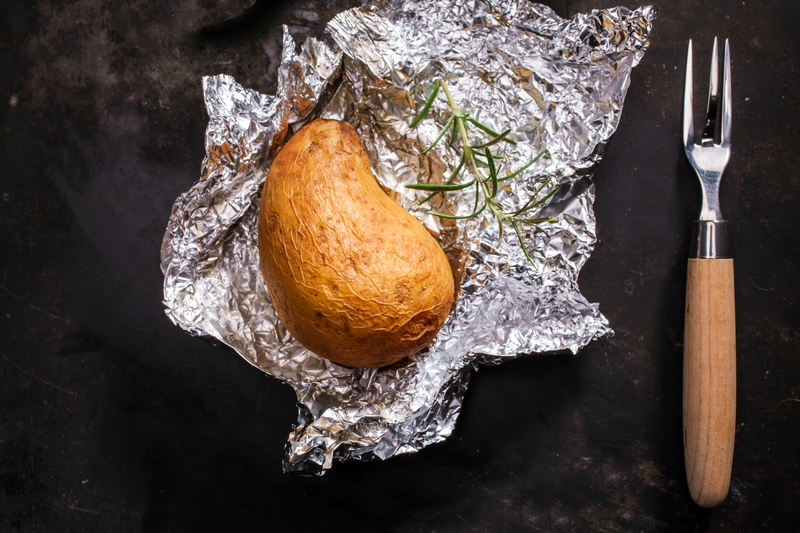 Baking potatoes is a culinary art that involves the perfect balance of heat, flavor, and texture.
Baking potatoes is a culinary art that involves the perfect balance of heat, flavor, and texture.
One common practice in baking potatoes is using foil to wrap them, but the question often arises: Which way does foil go for baking potatoes?
In this article, we will explore the reasons behind using foil, the potential pitfalls, and the best practices to achieve a perfectly baked potato.
Why Use Foil for Baking Potatoes?
Foil is a versatile kitchen tool that has several advantages when it comes to baking potatoes.
Understanding the reasons for using foil can help you make informed decisions about how to incorporate it into your potato-baking routine.
- Heat Retention
Foil is an excellent heat conductor, and when wrapped around potatoes, it helps retain heat.
This means that the potatoes cook more evenly, ensuring that each bite is perfectly cooked from the outside to the center.
- Moisture Preservation
Foil acts as a barrier that prevents moisture loss during the baking process.
This is crucial for maintaining the natural moisture of the potatoes, resulting in a fluffy and tender interior rather than a dry and mealy texture.
- Flavor Infusion
Wrapping potatoes in foil can enhance the flavor profile of your baked potatoes.
The enclosed environment created by the foil allows the potatoes to absorb and retain the flavors of any seasonings, herbs, or oils you add, creating a more flavorful end product.
Potential Pitfalls of Using Foil
 While foil can be a valuable tool in the kitchen, there are potential drawbacks to consider when using it for baking potatoes.
While foil can be a valuable tool in the kitchen, there are potential drawbacks to consider when using it for baking potatoes.
Awareness of these pitfalls can help you make an informed decision about whether or not to use foil in your potato-baking process.
- Lack of Crispy Skin
For those who enjoy a crispy potato skin, using foil may not be the best option.
Foil traps moisture, preventing the skin from crisping up during baking.
If a crispy skin is desired, alternatives such as oiling the skin directly or baking the potatoes without foil should be considered.
- Extended Cooking Time
While foil helps retain heat, it can also extend the overall cooking time.
If you’re in a hurry or looking for a quick bake, adjusting your foil usage or opting for foil-free baking may be more suitable.
Best Practices for Using Foil in Baking Potatoes
To achieve the perfect balance of a tender interior and a crispy skin, it’s essential to follow some best practices when using foil for baking potatoes.
- Prick the Potatoes
Before wrapping in foil, it’s advisable to prick the potatoes with a fork.
This allows steam to escape during baking, preventing the potatoes from becoming too mushy.
- Use Parchment Paper
For those who want to retain the benefits of foil without sacrificing a crispy skin, placing a layer of parchment paper between the foil and the potatoes can help.
This allows the foil to retain moisture while preventing it from directly affecting the skin.
- Unwrap for the Final Minutes
To achieve the best of both worlds – a moist interior and a crispy skin – consider unwrapping the foil during the final minutes of baking.
This allows the skin to crisp up while maintaining the benefits of foil for the majority of the cooking time.


 When wrapping potatoes in foil for baking, it’s generally recommended to have the shiny side of the foil facing inwards towards the food.
When wrapping potatoes in foil for baking, it’s generally recommended to have the shiny side of the foil facing inwards towards the food.